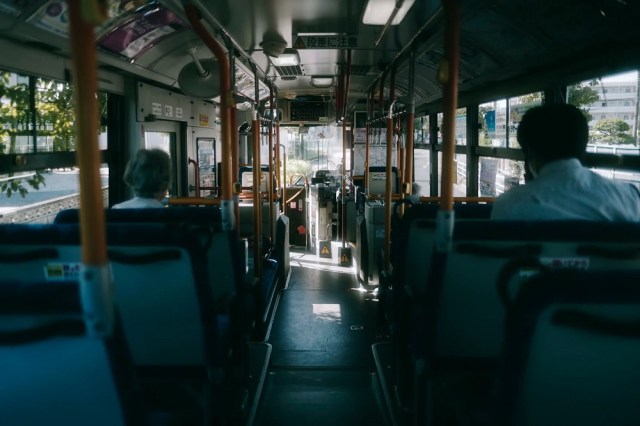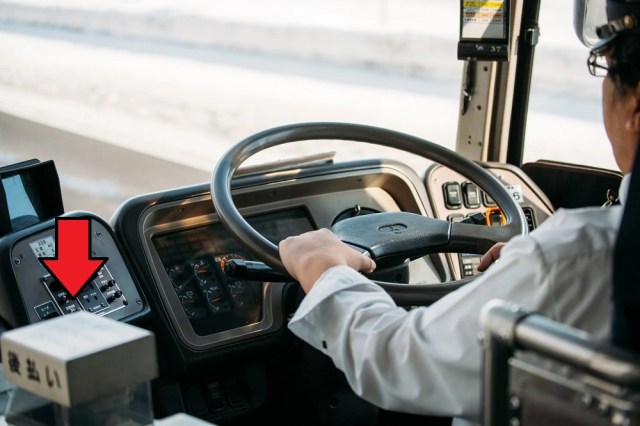
Transportation bureau wants to collect full fares while still making the ride pleasant for all passengers.
As Kyoto’s inbound foreign tourist numbers continue to grow, there’s been a lot of talk about overcrowding on its city buses, since many routes have stops at both major sightseeing attractions and places locals need to get to as part of their daily lives. Now, though, Kyoto is dealing with another problem involving foreign travelers on its buses: some of them aren’t paying their fares.
It doesn’t appear that visitors from overseas are intentionally trying to skip out on paying for their rides, though. Instead, the causes seem to be an unfamiliarity with how the payment system works and a language barrier when trying to resolve on-the-spot issues.
On buses in downtown Kyoto, passengers board through the door at the back of the bus, then make their payment at the front as they exit, with the most common way to pay being tapping a prepaid IC card, such as Suica, on a terminal next to the driver’s seat. Since the buses charge a flat, per-ride fare in the downtown area, you don’t have to tap the card when you get on, just once when you get off.
▼ A payment terminal or box next to the driver, like the one shown here, is the norm on buses in Japan.
But while this one-tap format is convenient, it means that it’s possible to board the bus without having enough money charged on your card to actually pay for the fare when it’s time to get off. If you tap to make a payment with a card that doesn’t have sufficient funds, an error alert will sound. However, according to the Kyoto City Transportation Bureau, they’ve had multiple reports from bus operators of foreign tourists who either don’t notice the error sound, sometimes because they’ve got earphones in, or who don’t understand what it means. These travelers then sometimes hop off the bus, mistakenly thinking they’ve paid their fare when they actually haven’t.
When the insufficient fund error is triggered, the passenger is supposed to pay the driver in cash. However, in the case of foreign travelers who don’t speak Japanese, Kyoto bus drivers have reported difficulty in explaining the requirement, even when they’re able to indicate that something has gone wrong before the foreign passenger exits the vehicle. According to the Transportation Bureau, sometimes drivers have had no choice but to give up and just let tourists get off with a free ride, in order to avoid delaying the bus any longer.
To alleviate the problem, the Transportation Bureau has created new explanation sheets and provided them to bus operators. The sheets outline the payment procedure in multiple languages, including English and Chinese, which the bureau hopes will allow bus operators to more clearly communicate the requirements without any unnecessary stress for the driver or passenger.
Another idea that’s been floated is having passengers board from the front of the bus and make their payment at the start of their ride, then exit from the rear. However, the bureau says that implementing this would require costly reconfigurations of existing bus station/bus stop layouts, and so they’re going with the explanatory sheets for now.
While the sheets are a smart way to help resolve problems when they occur, as a traveler it’s still probably best to do what you can to prevent them from occurring in the first place, which in this case means making an effort to keep your IC card charged up with enough cash to cover your ride before you get on (the same IC cards can be used for buses, trains, and subways, so they’re easy to top up at any station). The Transportation Bureau has also said they’ve encountered problems with foreign tourists who, in addition to not having sufficient funds on their IC card, only have a credit card or foreign currency on them, neither of which can be used to pay bus fares, so keeping at least some yen on you at all times is a smart idea.
And if, even with your fares all sorted, you’re finding Kyoto’s buses just too crowded for your tastes, we’ve got a lot of no-bus walking courses that’ll take you to the city’s major sights mapped out right here.
Source: NHK News Web
Top image: Pakutaso
Insert image: Pakutaso (edited by SoraNews24)
● Want to hear about SoraNews24’s latest articles as soon as they’re published? Follow us on Facebook and Twitter!


 Kyoto wants to add extra charges for tourists to use city buses
Kyoto wants to add extra charges for tourists to use city buses Buses in one of Japan’s largest cities can’t take new yen bills, leaving strange solution
Buses in one of Japan’s largest cities can’t take new yen bills, leaving strange solution Fare-dodging Chinese bus passenger balances karma by repaying years of delinquent fare
Fare-dodging Chinese bus passenger balances karma by repaying years of delinquent fare Tourists warned about fake volunteer guide near Kinkakuji in Kyoto
Tourists warned about fake volunteer guide near Kinkakuji in Kyoto Kyoto creates new for-tourist buses to address overtourism with higher prices, faster rides
Kyoto creates new for-tourist buses to address overtourism with higher prices, faster rides Disillusionment at Tsukiji’s tourist-target prices led us to a great ramen restaurant in Tokyo
Disillusionment at Tsukiji’s tourist-target prices led us to a great ramen restaurant in Tokyo Starbucks Japan releases new zodiac chilled cup drink for 2026
Starbucks Japan releases new zodiac chilled cup drink for 2026 Why you shouldn’t call this food “Hiroshimayaki” if you’re talking to people from Hiroshima
Why you shouldn’t call this food “Hiroshimayaki” if you’re talking to people from Hiroshima Large amount of supposed human organs left in Osaka marketplace
Large amount of supposed human organs left in Osaka marketplace A Japanese dating app matched our bachelorette with a Buddhist monk, and she learned some things
A Japanese dating app matched our bachelorette with a Buddhist monk, and she learned some things Princesses, fruits, and blacksmiths: Study reveals the 30 most unusual family names in Japan
Princesses, fruits, and blacksmiths: Study reveals the 30 most unusual family names in Japan Bando Taro proves family restaurants in Japan are on a whole other level
Bando Taro proves family restaurants in Japan are on a whole other level What’s inside the McDonald’s Japan fukubukuro lucky bag for 2026?
What’s inside the McDonald’s Japan fukubukuro lucky bag for 2026? Things Japanese girls do that make foreign guys run for the hills
Things Japanese girls do that make foreign guys run for the hills Starbucks on a Shinkansen bullet train platform: 6 tips for using the automated store in Japan
Starbucks on a Shinkansen bullet train platform: 6 tips for using the automated store in Japan 7-Eleven Japan starts new temporary luggage storage service in over 300 branches
7-Eleven Japan starts new temporary luggage storage service in over 300 branches Starbucks teams up with 166-year-old Kyoto doll maker for Year of the Horse decorations【Photos】
Starbucks teams up with 166-year-old Kyoto doll maker for Year of the Horse decorations【Photos】 Tokyo’s Tsukiji sushi neighborhood asks tour groups to stay away for the rest of the month
Tokyo’s Tsukiji sushi neighborhood asks tour groups to stay away for the rest of the month Street Fighter Hadouken Churros to be launched and eaten in Tokyo, Okami pudding on offer too
Street Fighter Hadouken Churros to be launched and eaten in Tokyo, Okami pudding on offer too Japanese avoiding domestic travel as foreign tourists increase, possibly creating vicious cycle
Japanese avoiding domestic travel as foreign tourists increase, possibly creating vicious cycle Japanese woman mistaken for bear
Japanese woman mistaken for bear Return of Totoro sequel short anime announced for Ghibli Park
Return of Totoro sequel short anime announced for Ghibli Park Is this the most relaxing Starbucks in Japan?
Is this the most relaxing Starbucks in Japan? More Shinkansen trains being added to Japan’s “golden route” to meet traveler demand
More Shinkansen trains being added to Japan’s “golden route” to meet traveler demand Japan’s human washing machines will go on sale to general public, demos to be held in Tokyo
Japan’s human washing machines will go on sale to general public, demos to be held in Tokyo Starbucks Japan unveils new Christmas goods and a rhinestone tumbler that costs 19,500 yen
Starbucks Japan unveils new Christmas goods and a rhinestone tumbler that costs 19,500 yen Japanese train company is letting fans buy its actual ticket gates for their homes
Japanese train company is letting fans buy its actual ticket gates for their homes Is China’s don’t-go-to-Japan warning affecting tourist crowds in Tokyo’s Asakusa neighborhood?
Is China’s don’t-go-to-Japan warning affecting tourist crowds in Tokyo’s Asakusa neighborhood? The 10 best day trips from downtown Tokyo【Survey】
The 10 best day trips from downtown Tokyo【Survey】 Tokyo considering law requiring more trash cans following litter increase in heavily touristed area
Tokyo considering law requiring more trash cans following litter increase in heavily touristed area Nintendo’s Kirby now delivering orders at Kura Sushi restaurants, but not in Japan
Nintendo’s Kirby now delivering orders at Kura Sushi restaurants, but not in Japan Survey asks foreign tourists what bothered them in Japan, more than half gave same answer
Survey asks foreign tourists what bothered them in Japan, more than half gave same answer Japan’s deadliest food claims more victims, but why do people keep eating it for New Year’s?
Japan’s deadliest food claims more victims, but why do people keep eating it for New Year’s? We deeply regret going into this tunnel on our walk in the mountains of Japan
We deeply regret going into this tunnel on our walk in the mountains of Japan Studio Ghibli releases Kodama forest spirits from Princess Mononoke to light up your home
Studio Ghibli releases Kodama forest spirits from Princess Mononoke to light up your home Major Japanese hotel chain says reservations via overseas booking sites may not be valid
Major Japanese hotel chain says reservations via overseas booking sites may not be valid Put sesame oil in your coffee? Japanese maker says it’s the best way to start your day【Taste test】
Put sesame oil in your coffee? Japanese maker says it’s the best way to start your day【Taste test】 The top 10 annoying foreign tourist behaviors on trains, as chosen by Japanese people【Survey】
The top 10 annoying foreign tourist behaviors on trains, as chosen by Japanese people【Survey】 No more using real katana for tourism activities, Japan’s National Police Agency says
No more using real katana for tourism activities, Japan’s National Police Agency says Starbucks Japan reveals new sakura drinkware collection, inspired by evening cherry blossoms
Starbucks Japan reveals new sakura drinkware collection, inspired by evening cherry blossoms Tokyo bus operator adds free-to-use USB chargers for tech-loving passengers
Tokyo bus operator adds free-to-use USB chargers for tech-loving passengers Things go from scary to sweet when Japanese traveler meets tattooed man on bus overseas【Manga】
Things go from scary to sweet when Japanese traveler meets tattooed man on bus overseas【Manga】 Kyoto will abolish one-day bus passes to combat tourism overcrowding
Kyoto will abolish one-day bus passes to combat tourism overcrowding Ujicha Bus in Kyoto celebrates Uji matcha green tea with Japanese teahouse interior【Photos】
Ujicha Bus in Kyoto celebrates Uji matcha green tea with Japanese teahouse interior【Photos】 Bus driver who pocketed 1,000 yen in fares denied 12 million yen in retirement money
Bus driver who pocketed 1,000 yen in fares denied 12 million yen in retirement money How to travel from Tokyo to Kyoto on the overnight bus and not lose your sanity
How to travel from Tokyo to Kyoto on the overnight bus and not lose your sanity Human hair from India helps make Japanese buses more efficient
Human hair from India helps make Japanese buses more efficient Japan to have full-flat overnight sleeper buses this spring【Video】
Japan to have full-flat overnight sleeper buses this spring【Video】 Is Kyoto really as crowded with foreign tourists as they say?
Is Kyoto really as crowded with foreign tourists as they say? China’s new bus design looks like a car-eating monster 【Video】
China’s new bus design looks like a car-eating monster 【Video】 Japan travel warning: Buses can and will leave you behind at highway rests stops if you’re late
Japan travel warning: Buses can and will leave you behind at highway rests stops if you’re late Moving to Japan as a foreigner to work as a taxi, bus or truck driver may be getting easier soon
Moving to Japan as a foreigner to work as a taxi, bus or truck driver may be getting easier soon Okayama buses strike by continuing to run and refusing to take anyone’s money
Okayama buses strike by continuing to run and refusing to take anyone’s money Taipei introduces taxi tours and 24-hour toll-free interpretation services for foreign tourists
Taipei introduces taxi tours and 24-hour toll-free interpretation services for foreign tourists First foreigner becomes tour bus driver in Japan under specified skilled worker program【Video】
First foreigner becomes tour bus driver in Japan under specified skilled worker program【Video】 Kyoto study finds nearly 500 translation errors for foreign tourists, new guidelines released
Kyoto study finds nearly 500 translation errors for foreign tourists, new guidelines released
Leave a Reply